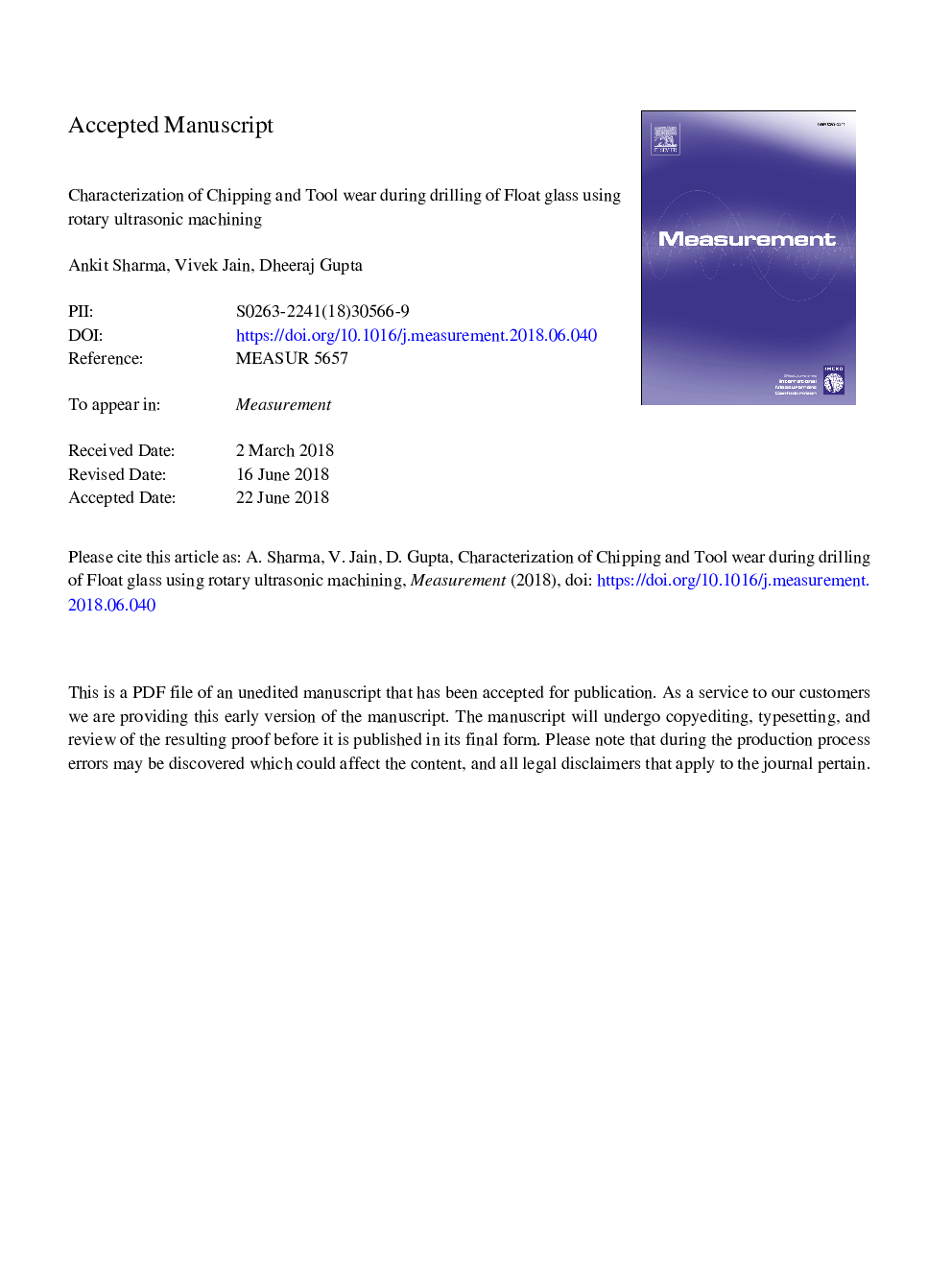| Article ID | Journal | Published Year | Pages | File Type |
|---|---|---|---|---|
| 7120258 | Measurement | 2018 | 42 Pages |
Abstract
Float glass's utility is emerging continuously; major application of float glass is in solar panel and architecture glass. However, the researchers are still bearing drilling problems i.e. chipping near hole's exit corner and tool wear. Therefore, this study has carried out a designed experimental investigation while drilling float glass by Rotary ultrasonic machining (RUM) process. The authors have made an attempt to estimate the relationship between selected machining parameters i.e. feed rate, vibration amplitude and tool diameter with the chipping amount at hole exit. The core objective is to reduce the chipping by optimizing the opted machining factors. The novelty of this work is a measurement of chipping using coordinate measuring machine (CMM). It is revealed that the least volume of chipping is estimated as 3.81â¯mm3. The best parametric combination to obtain the least amount of chipping volume is considered as the first level of feed rate (F1), the third level of vibration amplitude (A1) and the first level of tool diameter (TD1). This study investigates the tool wear occurs at three different drilling stages. Tool (6â¯mm diameter) has carried out least amount of weight loss i.e. 4.78%. The tool which contains the least surface area (integrated lateral and end face) in contact with the workpiece sample has created minimum weight loss.
Related Topics
Physical Sciences and Engineering
Engineering
Control and Systems Engineering
Authors
Ankit Sharma, Vivek Jain, Dheeraj Gupta,
